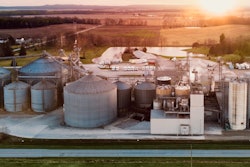
ForFarmers reports gross profit was up 4.3% in the third quarter of 2023, while volumes were down 6.2%. Underlying earnings before interest, taxes, depreciation and amortization (EBITDA) was up 33.6%, the company reported on November 3.
“Although less feed was sold than last year in the third quarter, approximately the same amount was sold as in the second quarter of this year. The new working method, in which local organizations are active in the market with different products and specific advice, is paying off. It supports our confidence in the more positive development of results for the second half of the year, as stated in the first half-year report,” said CEO Pieter Wolleswinkel.
Compared with the third quarter of 2022, volumes have decreased in all sectors. Fewer sales were made in the ruminant sector as a result of the steadily declining milk prices since the beginning of this year in combination with good weather conditions.
Sales in the pig sector have remained relatively stable compared with sales in the first and second quarters of 2023. Volumes in the poultry sector were somewhat lower than a year earlier. This is based on both the transition to Better Living free-range concepts and the cessation of feed production in Belgium. In addition, volumes in Poland increased again.
Net turnover fell compared with a year earlier, driven by lower raw material prices and volumes. Gross profit increased due to a better product mix and the specific local approach. The underlying total operating expenses were virtually the same. Energy costs were lower than last year. At that time, energy prices were extremely high due to the war in Ukraine. While there were fewer employees (in FTEs) than a year earlier, personnel costs were higher. This was due to the collective labor agreement increases at the beginning of 2023.
Average prices in Europe for meat and eggs were higher in the third quarter of 2023 than a year earlier. They were also higher than in the United States, Brazil and Canada. This had an effect on exports from Europe. Milk prices in Europe have started to fall from the beginning of this year. Dairy farmers received substantially less for their milk in the third quarter of 2023 than a year earlier. Prices for raw materials and energy were also significantly lower this year than in the third quarter of 2022. At that time, the war in Ukraine threatened to create a major shortage of raw materials and energy, causing prices to rise significantly. Given the geopolitical developments, there remains unrest about availability and the price development of raw materials as well as energy and diesel prices remain volatile.










